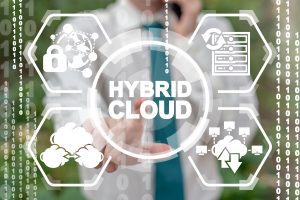How is the fourth industrial revolution changing the world of business

We look at how the Fourth Industrial Revolution is changing the world of business.
Click here to listen to ‘The fourth industrial revolution is here’ podcast now.
The Fourth Industrial Revolution (4IR) is a term created in 2016 by Klaus Schwab, Founder and Executive Chairman of the World Economic Forum (WEF). This revolution is based on the blurring lines between the physical, digital, and biological worlds.
The Industrial Analytics Platform has said that what truly sets 4IR technologies apart is the novel way hardware, software, and connectivity are being reconfigured and integrated to achieve ever-more ambitious goals. The collection and analysis of vast amounts of data, the seamless interaction between smart machines, and the blurring of physical and virtual dimensions of production. For example, sensors might detect specific actions or process durations, or ambient conditions such as temperature, allowing for independent self-correction according to insights from ‘big data’ and artificial intelligence (AI). These data points might also feed through the system in real-time to adjust and optimize downstream stages of the manufacturing process, minimizing downtime and freeing up resources.
4IR was starting slowly, with many countries and companies lagging on improving their technologies. However, as the pandemic thrust governments and businesses into a position where they had to act quickly and implement various technological improvements to survive the pandemic. Now that 4IR is in full swing, it’s important to understand some of the technologies that come with the revolution and how they can help your business.
AI is one of the technologies that is coming out of 4IR. AI is a computer that can think like humans and identify various patterns, process information, draw conclusions and make recommendations. Three main types of AI can assist businesses:
- The most common type of AI is the process automation of digital and physical tasks. Using robotic process automation technologies, it can complete various admin and financial activities without human intervention. Some of these tasks include transferring information from e-mail and call centre systems into record systems, assisting customers with replacing lost credit or ATM cards, updating and handling customer communications and “reading” legal and contractual documents.
- Cognitive insight is the second most common type of AI. Cognitive insight helps by detecting patterns amongst large amounts of data and understand their meaning. For example, these systems are used to determine what a customer will likely buy, identify fraud within bank accounts and on insurance claims, automate personalized and targeted digital adverts, etc.
- The third most common type of AI is cognitive engagement. This helps businesses interact with their customers and employees through chatbots, intelligent agents, and machine learning. These systems allow companies to offer 24/7 customer service and providing product and service recommendations that increase personalization, engagement, and sales.
VR and AR
Virtual reality and augmented reality is another technology that is coming out of 4IR. The European Business Review has explained that Augmented Reality (AR) and Virtual Reality (AR) create a bridge between the fictional and actual world. While AR helps your devices with everyday activities like searching for information, games, and shopping, VR takes you to an imaginary world with no links with the real world, such as a planet far away from Earth. AR and VR are mostly blended to generate an engaging experience to transport the user to the fictitious world by giving a new dimension of interaction between a real and virtual world.
VR and AR can help businesses by providing their customers with a unique and insightful experience. The use of AR in marketing and sales allows customers to picture products in their houses and their closets. During the pandemic, this helped millions of people with online shopping as they could visualize something that they usually would go into the shop to purchase. In addition, VR can help businesses train employees, especially in industries like real estate and construction. These industries can also show potential clients what the finished product would look like and can assist in increasing sales. A PwC report from 2019 predicted that nearly 23.5 million jobs worldwide would be using AR and VR by 2030 for training, work meetings, or to provide better customer service.
Biotechnology
Biotechnology has taken off in the last few years and is definitely a technology of interest with 4IR. At its simplest, biotechnology is technology based on biology. Biotechnology harnesses cellular and biomolecular processes to develop technologies and products that help improve our lives and the health of our planet. We have used the biological processes of microorganisms for more than 6,000 years to make useful food products, such as bread and cheese, and to preserve dairy products. Modern biotechnology provides breakthrough products and technologies to combat debilitating and rare diseases, reduce our environmental footprint, feed the hungry, use less and cleaner energy, and have safer, cleaner and more efficient industrial manufacturing processes.
Biotechnology helps to make the world more sustainable and can help businesses by creating solutions to make all facets of our lives more sustainable for the environment. Businesses can use various biotechnology processes to improve the production of their products with less pollution, water, land and energy.
IoT
The Internet of Things describes everyday items that connect to the internet and with each other. Businesses can use IoT technology to modernize business operations and improve productivity in numerous ways. When it comes to growing your business, IoT can help by reducing business expenses; tailoring marketing campaigns; enhancing the user experience; improving business security and allowing for more remote working opportunities. A big advantage for businesses is that these items collect customer data due to the connected products. As a result, businesses can now better gauge how customers use products and customize marketing campaigns for each customer. There are also advantages to various industrial applications, such as farmers who can use IoT sensors that monitor soil qualities and make informed decisions such as when to fertilize.
READ MORE:
- How Artificial Intelligence is set to revolutionize industries
- Intelligent sales: preparing for the imminent sales revolution
- UK workers are driving a digital-first revolution
- Zilch: the time is ripe for a shopping revolution
With all of these technologies being implemented into businesses, it is essential for business leaders to ensure that they have future-proofed their workforce to minimize job losses. Businesses need to start upskilling their current employees while also looking for specific skills in potential new employees. Employees will constantly have to update their skills as technology changes, meaning a one-off training session will not suffice to future proof a workforce.
Click here to discover more of our podcasts now
For more news from Top Business Tech, don’t forget to subscribe to our daily bulletin!
